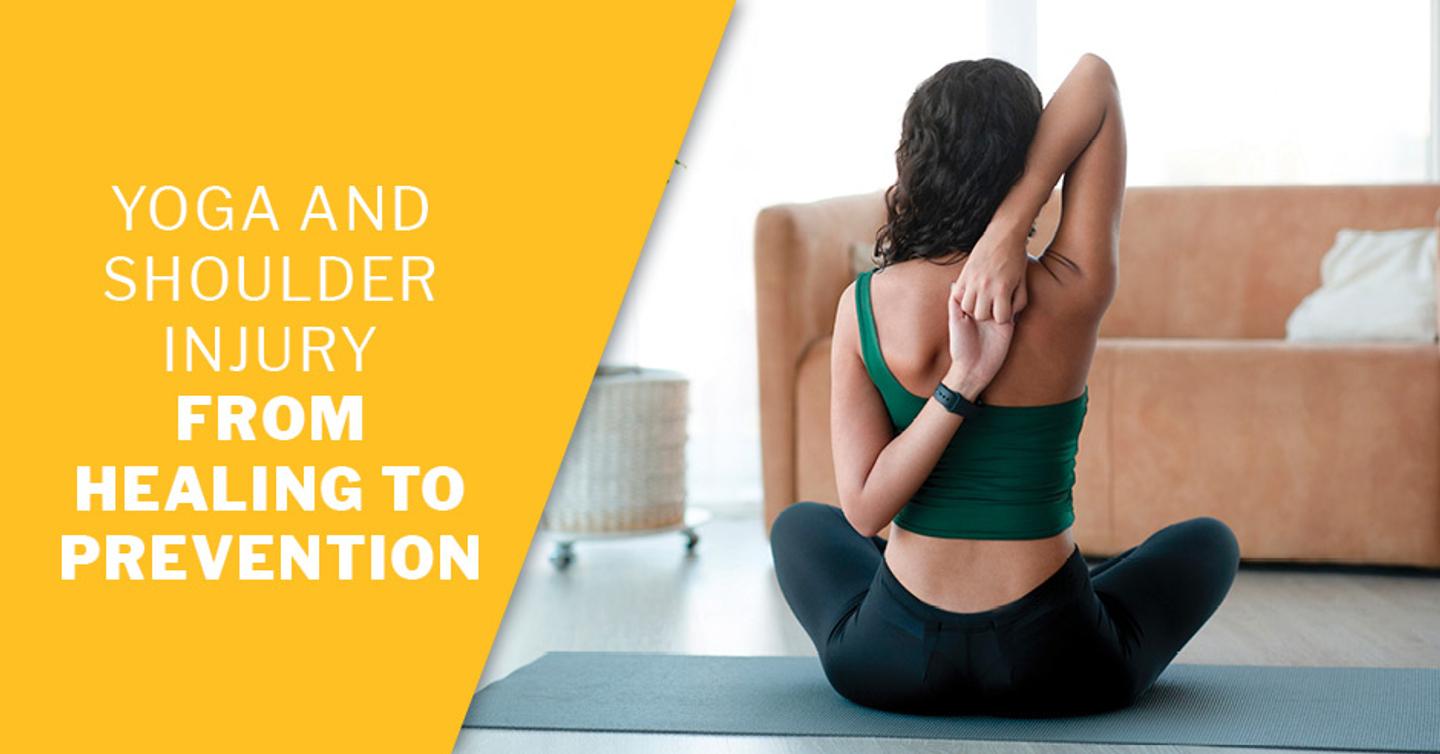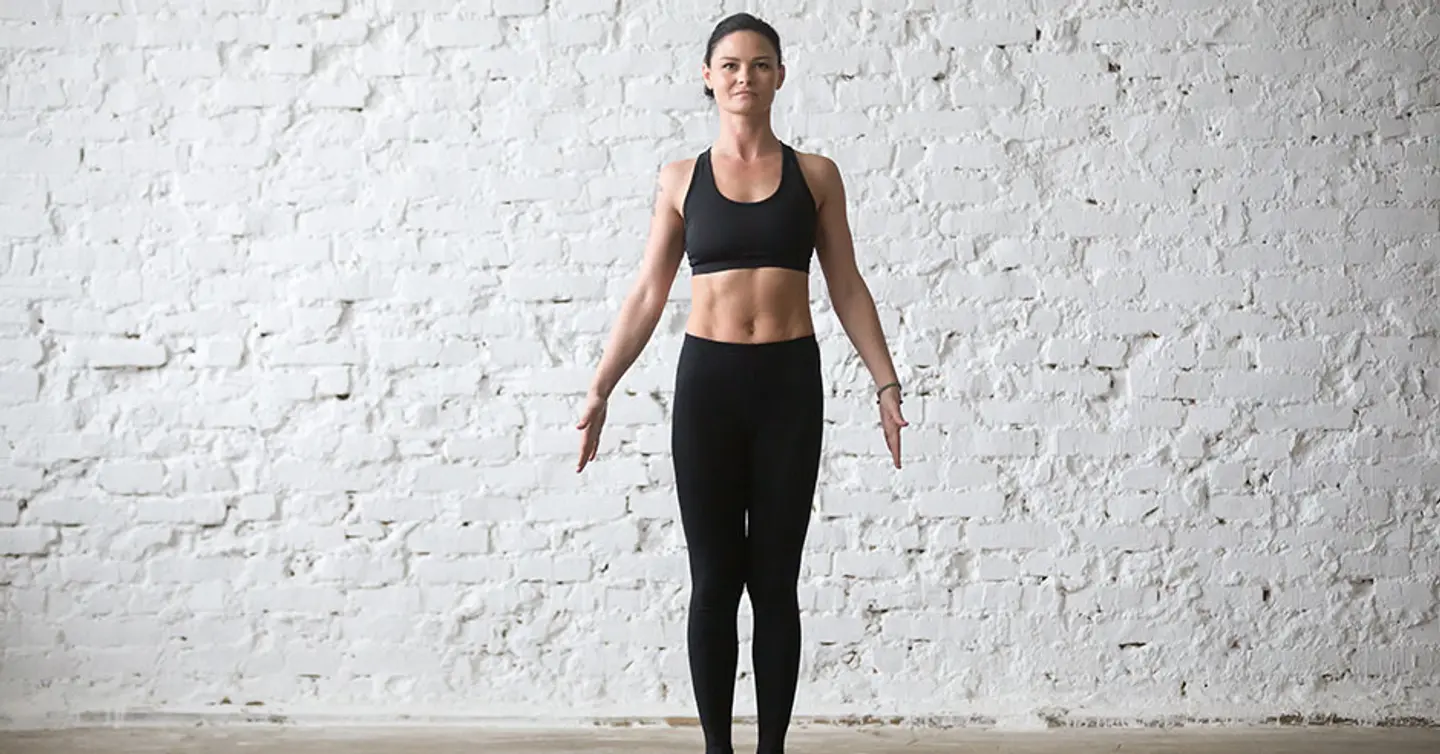
Yoga and Shoulder Injury: From Healing to Prevention
Reading Time: 5 minutes 33 seconds
BY: ISSA
DATE: 2023-02-01
Yoga is known for providing improvements in strength and flexibility. Others prefer this form of exercise for its relaxation effect. But what if your client has an injury to (or pain in) the shoulder area? Should they still practice yoga?
Before we answer that question, let's look at the shoulder anatomy and some of the most common reasons clients may experience shoulder pain or injury.
Shoulder Anatomy and Function
The shoulders consist of three main muscles:
Anterior deltoid
Medial deltoid
Posterior deltoid
The anterior deltoid is often referred to as the front deltoid. The medial deltoid is called the side or lateral deltoid. The posterior deltoid is often called the rear deltoid. These terms are used interchangeably. The names are derived from the origin of each muscle.
The anterior delts are located on the front part of the upper arm. They assist in arm flexion and internal rotation. The medial delts are located on the outside of the upper arm. These help with overhead pressing and adduction. Lastly, the posterior delts are found on the back of the upper arm. They help the arm extend and laterally rotate.
Additional support for the shoulder comes from the following:
Rotator cuff
Biceps and triceps in the upper arm
Pectoralis muscles of the chest
Latissimus dorsi and teres in the back
Musculature of the shoulder blades
Trapezius and rhomboids
Common Shoulder Pain Causes
As much as 26 percent of the population struggles with some level of shoulder pain (1). In some cases, this pain is caused by poor posture or the type of work they do.
For instance, if they are in construction and repeatedly lift heavy loads throughout their workday, they may notice more pain in the shoulder area. Hairdressers are also at risk of elevated pain in the shoulder. This is due to "repetitive movements in awkward positions."
Pain may also appear in the shoulder joint because of injury. A rotator cuff tear or strain can happen while playing sports. Excessive hours spent swimming or practicing the perfect pitch could have led to shoulder impingement. A pinched shoulder tendon can cause tendonitis.
In instances such as these, pain is often the result. Developing a regular yoga practice can help with pain relief. Ultimately, this provides clients with a higher quality of life.
Developing a Yoga Practice to Ease Shoulder Pain
Research reveals that if your client is experiencing shoulder pain, yoga can potentially help reduce the discomfort. Yoga can also help ease pain that originates in the shoulder but is felt elsewhere. An example of this is a 2015 study which reports that complementary therapies such as yoga are often sought to help reduce back and neck pain (2). One of the main causes of pain in these areas is muscle tension in the hips and shoulders. Yoga helps in releasing tension and tight muscles which, in turn, eases the pain.
Another piece of research supported this notion. This study looked specifically at yoga's effect on neck pain. Its participants were asked to perform Iyengar yoga for nine weeks. Those assigned to the yoga group reported "significantly less" pain in their neck than the group that served as a control. The yoga group also had reduced disability and an improved quality of life mentally. Researchers concluded that yoga provided these benefits by positively influencing neck muscle function (3).
Yoga can also help reduce pain in the shoulder that is caused by chronic illness. For instance, one study noted that shoulder pain is common among breast cancer patients . After performing 10 weeks of Hatha yoga, these patients indicated that their pain severity improved. Additionally, their level of pain remained lowered for more than two months post-treatment (4).

5 Yoga Poses for Shoulder Impingement, Rotator Cuff Injuries, and Pain Reduction
Which yoga poses are best for easing bothersome shoulder pain? For patients recovering from a rotator cuff injury or struggling with pain due to tendonitis, here are a few to consider:
1. Mountain Pose
This yoga pose helps strengthen muscle within the shoulder area. It also helps by engaging the serratus anterior muscle. This is the muscle that runs on the outside of your ribcage. When there is an issue with the serratus anterior, it can reduce shoulder range of motion. To do the mountain pose, stand with your feet together, your arms hanging at your sides. First, press your shoulder blades together. Next, separate them as much as possible. Hold this position for 30-60 seconds
2. Cow Face Pose
If your client has a slightly limited range of motion in their shoulder, this move helps improve that range. It begins by sitting cross-legged and involves reaching behind your back with your left arm. Try to touch the shoulder blade, if possible, and hold. Repeat on the other side.
3. Cat Cow Pose
This series of movements will help stretch the chest, neck, shoulders, spine, and lower back. Start in a tabletop position. Inhale, arch your spine down, and gaze up. On the exhale, round your spine up, tuck your tailbone, and relax your head down, drawing your chin to your chest.
4. Seated Cat Pose
Adding this pose to your yoga practice can help stretch tense shoulder muscles. To do it, sit cross-legged and inhale deeply while interlacing your fingers behind your back. Your arms should be fully extended. Lift your fingers toward the ceiling to elongate the muscle in the shoulder.
5. Thread the Needle Pose
You'll get a shoulder stretch on through the neck and upper back in this yoga posture. Begin in a tabletop position. Bring the right hand as far forward as you can. Then thread the left hand under the right arm. Relax your left shoulder and left cheek on the yoga mat. Hold, then repeat on the opposite side.
Some yoga poses can also be modified for clients with a frozen shoulder, an injured shoulder blade, or some other type of issue with the rotator cuff muscles. For example, instead of doing the Cobra pose, have them do a Baby Cobra. Whereas the Cobra pose requires lifting your entire upper body off the mat, the Baby Cobra only requires that you lift your shoulders and chest. This places less force on the shoulder.
The Warrior II pose can also be modified for a client with a rotator cuff injury. Have them place their hands on their hips versus extending them in opposite directions. This reduces tension on the shoulder joint and muscles. It is also easier on the neck. That makes this yoga pose modification also helpful for clients who have neck pain in addition to shoulder pain.
Common Ways Yoga Can Lead to Shoulder Injury
It's important to note that, while yoga can help ease shoulder pain, there are also some instances where it can create it as well.
One study analyzed data collected from 1,336 yoga teachers and therapists (5). Shoulder injury was listed as one of the most common and most severe injuries sustained during yoga practice. Each yogi was asked what they believe typically caused this type of yoga injury. Among the reasons provided were:
Poor technique
Having improper alignment during the yoga pose
Previous injury to the area
Using excessive effort
Inadequate instruction from the yoga therapist or yoga teacher
How to Prevent Shoulder Joint Injury When Doing Yoga
This research highlights why it is critical to continuously reinforce proper form, alignment, and technique when providing yoga instruction. Check in repeatedly with your clients during the yoga session. Make sure they aren't exerting too much effort. Ask them to constantly monitor and, if necessary, readjust their form.
This research also connected specific yoga poses to increased risk of shoulder injury. The two biggest offenders were downward facing dog and plank pose variations. These poses tend to be harder on the shoulder, as well as on the wrist.
Letting clients know that these poses have been linked to increased injury to the shoulder enables them to better watch for pain in this area during the movements. It also alerts them that, if they have a previous shoulder injury, these poses may need to be avoided.
It also helps to add more exercises that will help reduce shoulder injury and improve shoulder stability. These exercises work by strengthening the rotator cuff. Stretching and light resistance band exercises are two to consider.
A Final Word About Yoga and Shoulder Injury
If your personal training client is concerned about the risk of injury when doing yoga—whether that injury is to the shoulder or some other area—it may help to stress that, as long as they use proper form and technique, they should be able to avoid any potential issues.
Additionally, if they have previously suffered a rotator cuff tear or injured another muscle or tendon in the shoulder, they may want to consult with their doctor before beginning yoga or any other exercise program. This helps reduce the risk of inflaming that old injury. It also lowers the likelihood that they'll experience an increase in pain.
Their health provider may recommend that they perform corrective exercises targeted at the shoulders before beginning a yoga practice. Increasing shoulder mobility makes it easier to engage in the various yoga poses without pain. It also helps heal rotator cuff tears, frozen shoulder, and shoulder impingement.
The ISSA's Yoga Instructor certification program is a great way to learn more about yoga and the benefits it offers. This course also provides instruction about various yoga styles, from Yin Yoga to Ashtanga Yoga and more. Upon its completion, you will better understand how to perform yoga with proper form. This will help your clients reduce their injury risk. It also enables them to enjoy this centuries-old practice without worrying about it causing pain.
Featured Course
ISSA | Yoga Fundamentals
Learn the benefits of yoga, techniques and tools for teaching, and fundamental information for jump-starting your career.
References
Mitchell, C., Adebajo, A., Hay, E., & Carr, A. (2005). Shoulder pain: diagnosis and management in primary care. BMJ (Clinical research ed.), 331(7525), 1124–1128. https://doi.org/10.1136/bmj.331.7525.1124
Crow, E. M., Jeannot, E., & Trewhela, A. (2015). Effectiveness of Iyengar yoga in treating spinal (back and neck) pain: A systematic review. International journal of yoga, 8(1), 3–14. https://doi.org/10.4103/0973-6131.146046
Cramer, H., Lauche, R., Hohmann, C., Lüdtke, R., Haller, H., & Michalsen, A. et al. (2013). Randomized-controlled Trial Comparing Yoga and Home-based Exercise for Chronic Neck Pain. The Clinical Journal Of Pain, 29(3), 216-223. https://doi.org/10.1097/ajp.0b013e318251026c
Eyigor, S., Uslu, R., Apaydın, S., Caramat, I., & Yesil, H. (2018). Can yoga have any effect on shoulder and arm pain and quality of life in patients with breast cancer? A randomized, controlled, single-blind trial. Complementary Therapies In Clinical Practice, 32, 40-45. https://doi.org/10.1016/j.ctcp.2018.04.010
Fishman, L., Saltonstall, E., & Genis, S. (2009). Understanding and Preventing Yoga Injuries. International Journal Of Yoga Therapy, 19(1), 47-53. https://doi.org/10.17761/ijyt.19.1.922087896t1h2180